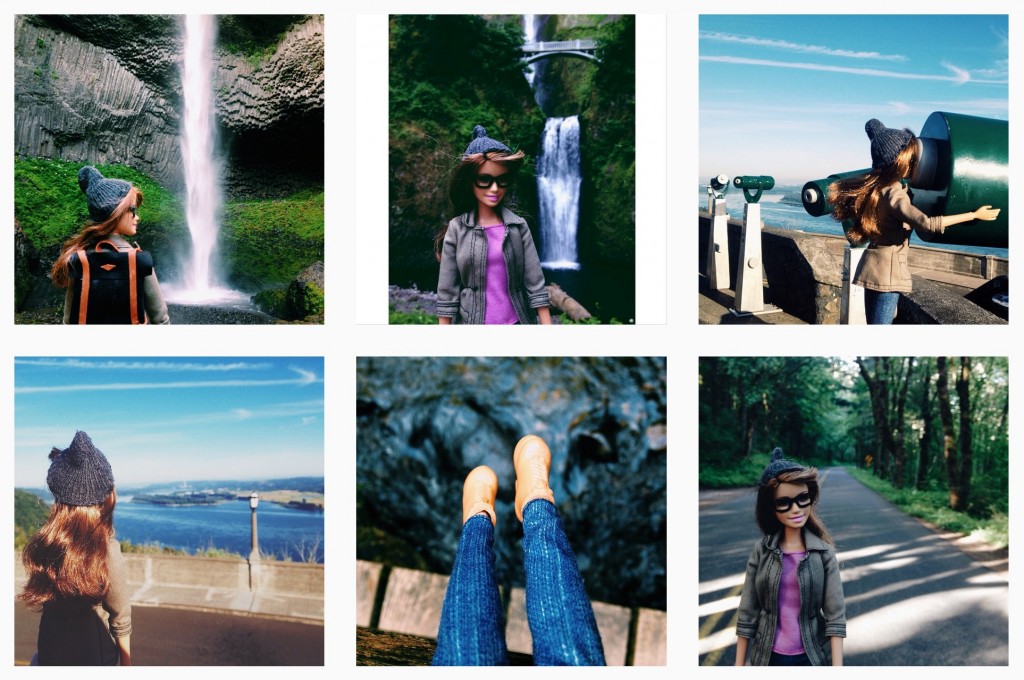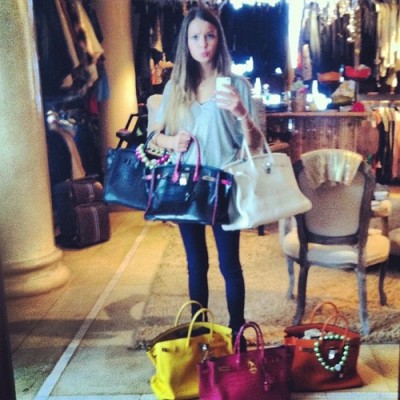 Many millions of people post countless images on a daily basis of their perfect soft-focus and sepia-toned lives on Instagram (and other social media). These images are cataloged and captioned and shared so that many more millions may participate vicariously in these wonderfully perfect moments.
Many millions of people post countless images on a daily basis of their perfect soft-focus and sepia-toned lives on Instagram (and other social media). These images are cataloged and captioned and shared so that many more millions may participate vicariously in these wonderfully perfect moments.
Recently a well known personality joined the Instagram picture-posting, image-sharing frenzy. Not unlike movie-stars, sports personalities and the music glitterati she’s garnered millions of followers on Instagram. She posts pictures of her latest, perfect outfits with perfect hair; she shows us perfect lattes sipped from the perfect coffee shop; she shares shares soft-focus sunsets from perfect mountaintops; images of a perfect 5-course dinner from a perfectly expensive bistro with or without that perfect bearded date; photographs of perfect vacations at the beach or from a yacht or a vintage train. She seems to have a perfect life, captured in a kaleidoscopic torrent of perfect visuals.
Her name is Barbie. Actually, her full name is Socality Barbie. She’s a parody of her human followers, and she’s well on her way to becoming the next social media sensation. Except, she’s not real, she’s a Barbie doll. But what’s really interesting about Socality Barbie is that she’s much like many of her human peers on social media — she’s a commoditized hipster.
My one complaint: she doesn’t take enough selfies. I wonder what’s next for her — perhaps an eponymous reality TV show.
From the Guardian:
Here she is on the sand, barefoot in the lapping waves, wearing cropped skinny jeans and shoulder-robing a blanket. And here she is in a cafe, the sleeves of her utility overshirt pushed up as she reaches for her flat white with its photogenic foam-art. Here she is in the mountains, wearing a beanie hat that perfectly offsets hair blow-dried into soft waves. Oh, and look, here’s a still-life shot of her weekend-away capsule wardrobe laid out on hardwood floors. She’s taking high-heeled hiking boots. But then, she is a Barbie doll.
Socality Barbie, the newest social-media sensation, is on a mission to take down Instagram from the inside. The account is the brainchild of an anonymous wedding photographer in Oregon, who dresses a Barbie doll in mini-hipster outfits and posts Instagram shots of doll-sized hikes (always sunny, lots of photogenic light shafts through the trees), coffee dates (whitewashed wooden tables and a calm, mindful atmosphere) and boyfriends (check shirt, facial hair).
It’s not exactly satire – I don’t think you can really satirise Instagram, that would be like satirising kittens – but Socality Barbie skewers something about how plastic Instagram has become. She is the Rosa Parks of a society oppressed by thigh gaps and tyrannised by heavily filtered brunches. She is a taking a brave stand against – OK, poking fun at – the disproportionate power and influence of Instagram, which has overtaken the Farrow & Ball paint chart as the sacred text we must live by.
Let me get one thing straight: I love Instagram. I am addicted. Sometimes I wake up in the night and, half asleep, reach for my phone and start scrolling through my feed, which at that hour is Lily-Rose Depp in novelty socks, people I vaguely know in New York taking overlit selfies in bars and insomniacs on a 3am camera-roll jag posting throwback photos with mawkish captions. And I love it. So I am absolutely not about to declare Instagram over. Anyway, that would be idiotic: in 2012, Facebook paid $1bn to buy it; it is now valued at $35bn. And in fashion, Instagram is everything. It has catwalk shows in real time, street style from all over the world, plus you get to see every time someone you know buys a new coat. What more could I possibly want?
But what Instagram isn’t any more is cutting edge. Instead of being hip, it is a world of commodified hipsterdom. All pigeon-toed loafers on pretty tiled floors and nail art on a hand holding a street-truck burger. It is a guilty pleasure, a cosy comforting world where everyone dresses really well and is also, like, super nice. It is is a bit like watching reality TV, in fact. You get to watch attractive people living their lives, at a level of apparent intimacy that makes it compelling. Theoretically, Instagram is more high-minded than reality TV, because it shows you a kaleidoscope of viewpoints from all over the world. The trouble is they all look the same.
Read the entire story here.
Images courtesy of Socality Barbie.


 Professional photographers take note: there will always be room for high-quality images that tell a story or capture a timeless event or exude artistic elegance. But, your domain is under attack, again — and the results are not particularly pretty. This time courtesy of Instagram.
Professional photographers take note: there will always be room for high-quality images that tell a story or capture a timeless event or exude artistic elegance. But, your domain is under attack, again — and the results are not particularly pretty. This time courtesy of Instagram.